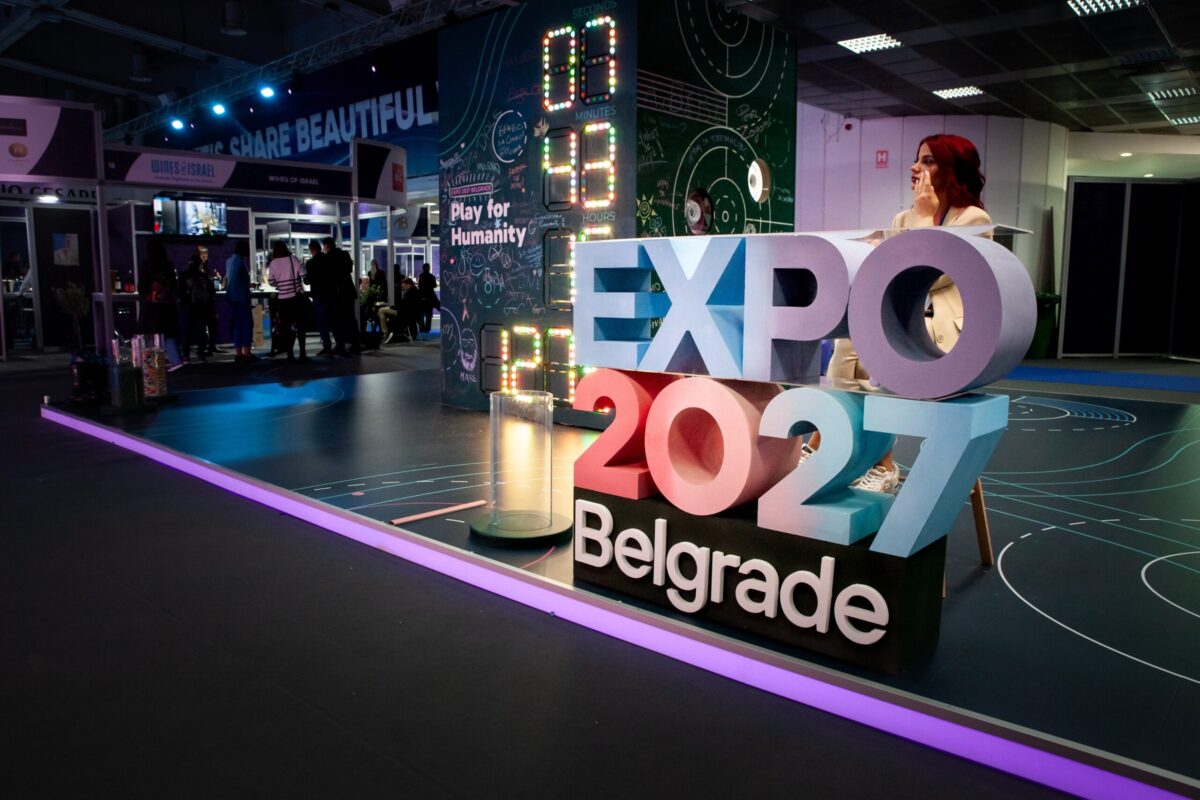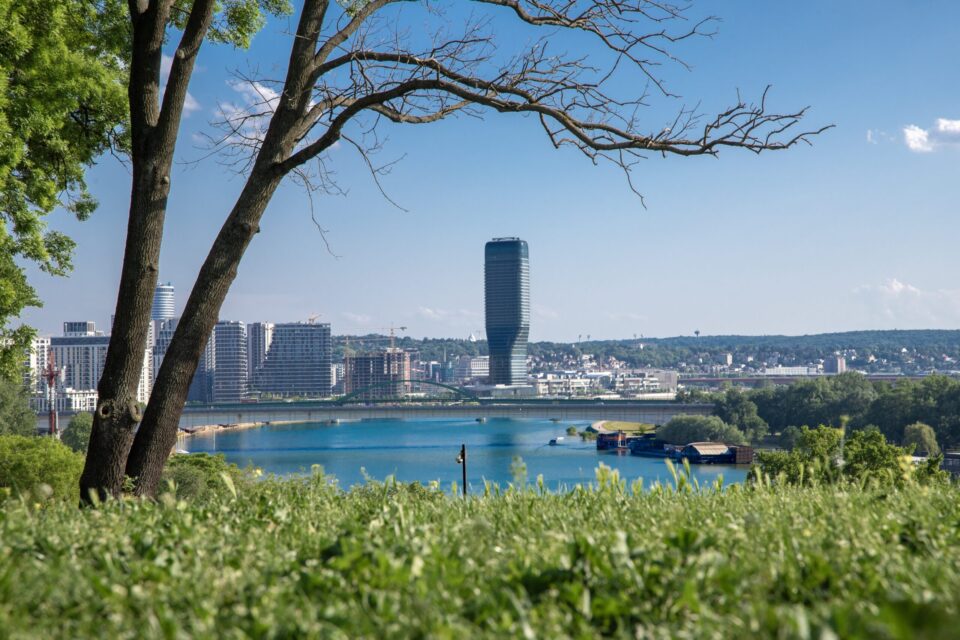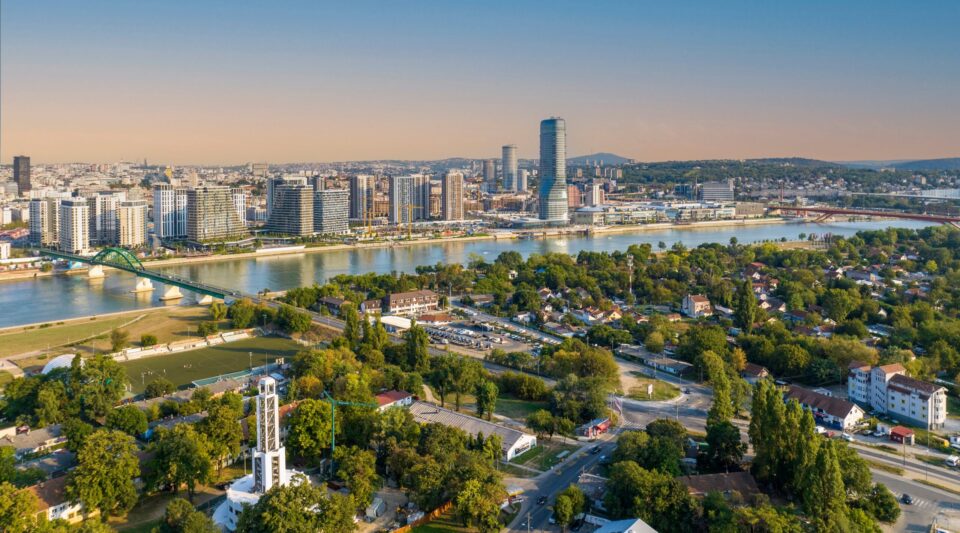It seems that many market participants want to somehow join the growth that EXPO 27 will bring

By Miodrag Gazibaba
In the distant year of 2005, few people wanted to live or work in New Belgrade in the area between the highway and the Sava River. At that time, for most people, Omladinskih Brigada Street marked the boundary and the end of New Belgrade. Today, it is becoming the central part of New Belgrade, as the city is rapidly expanding towards Surčin and the future EXPO 27 project.
For most investors and apartment buyers, there are certain mental barriers, boundaries they wouldn’t cross, and this is how the real estate market functions in every major city worldwide. Mental barriers include bridges, highways, large parks, and wide boulevards. In Belgrade, some mental barriers are obvious to everyone, such as the Danube River and the bridges that cross it. In those parts of the city, the price per square meter is significantly lower than on the other side of the bridge. Some people are divided between the old part of the city and New Belgrade, holding clearly defined views that they would not live on the side of the Sava River that doesn’t suit them. The decision to live in New Belgrade is pragmatic because you don’t waste time commuting to work, you have shopping centres nearby, and two rivers, but you don’t feel like you can go outside and take a walk; instead, you get in your car for all needs. Living on the other side of the Sava River is an emotional decision because much is sacrificed in daily life due to the distance from business buildings and parking issues, but those parts of the city “have a soul.”
The shifting of boundaries that existed in New Belgrade began in 2007 with the construction of Delta City, and already in 2009, the residential complex Belville with 1,900 apartments (priced then at around 1,700 to 1,900 EUR/m²) was built. At that time, the Airport City business complex had already completed two phases, covering nearly 40,000 m². The main reason this mental barrier shifted for some property buyers is that these projects were completed in a very short period, and EXPO 2027 partly mirrors that situation. The impact a shopping centre can have on a city is best seen in the example of Delta City in Podgorica, where almost no one wanted to live “on that side of the river,” but today the situation is significantly different.

Today, with the real estate market in Belgrade slowing in transaction volume, though not so much in prices, construction and sales on Omladinskih Brigada Street are ongoing at prices of 3,500 EUR/m² plus VAT and higher. Some investors are building their second phases or new projects in that street, giving the impression that they are satisfied with the transaction volume in that part of the city.
Mental barriers also operate on smaller scales, and perhaps the easiest to explain is the Upper Dorćol example, which is bordered by Piarron de Mondésir Street, Tsar Dušan Street, Francuska Street, and the streets connected to Students Square. The situation in Vračar is not so clear, with many investors claiming to have projects “in the heart of Vračar.” The price of new construction in Upper Dorcol is now between 5,000 and 6,000 EUR/m² plus VAT and higher while crossing the “boundary” of Cara Dusana Street to Lower Dorcol, prices are significantly lower, around 3,000-3,500 EUR/m² plus VAT. This mental barrier will be completely broken when the first phase of the Dorćol Marina project is built, which is behind another mental barrier, Dunavska Street. Parcels for construction along the future linear park, i.e., Dunavska Street, have already been purchased, so apartment prices in Lower Dorćol will start to rise in the next 3-5 years.
Mental barriers include bridges, highways, large parks, and wide boulevards
The mental barrier known as Omladinskih Brigada was already moved a few years ago when apartment buyers, due to high prices in this street, “agreed” to go as far as Tošin Bunar Street, where current prices range from 2,700 to 3,000 EUR/m² plus VAT. For apartment buyers in Omladinskih Brigada, it is likely sufficient that a large portion of office space and Delta City are within walking distance, and they might not be aware of future projects in the direction “towards Surčin,” which will one day transform this street into the central zone of New Belgrade. Near this central street of New Belgrade is the plot of the former IMT factory, over 30 hectares, where approximately 1 million square meters will likely be built. The shifting of boundaries concerning office space has already begun with new projects currently under construction. AFI City Zmaj is a new business park located on the highway extending from Bežanijska Kosa near the popular Zmaj gas station, which will eventually have nearly 200,000 m² of office space for lease. On the other side of the highway, the Green Escape business park is under construction, which will have over 60,000 m² of office space. For comparison, Airport City currently has 140,000 m², so apartments will be built where offices are located.
The future EXPO has awakened projects that have been in the urban planning phase for over 10 years, such as the Singidunum project on 250 hectares in Dobanovci, where both industrial and residential contents are planned in large quantities, as well as a project with golf courses and luxury apartments in the Becmen settlement. The private sector is quite quickly following the state.

When talking about hundreds of thousands of square meters and hundreds of millions of euros, phased construction is particularly important. The state must complete its part at once due to its obligations to international organizations, while all private investors reduce risk by building their projects in phases.
In the past 20 years, foreign investors needed to arrive, who buy parcels for construction by looking at the city map and measuring distances in minutes, not relying on advice from local experts explaining “what our people like.” Now, it seems that many market participants want to somehow join the growth that EXPO 27 will bring. The city is certainly growing in that direction, but any investment in real estate requires caution in planning the future and the pace at which that future is built, while only the monthly costs are certain.
The future EXPO has awakened projects that have been in the urban planning phase for over 10 years
One of the reasons apartments are bought in Belgrade is because the cost of an empty property is acceptable; property taxes are not the same as in developed markets, and monthly costs currently do not include an investment fund for capital investments and facade renovations. Therefore, it can be expected that apartment investors in Belgrade will also participate in the growth that comes with the EXPO project.